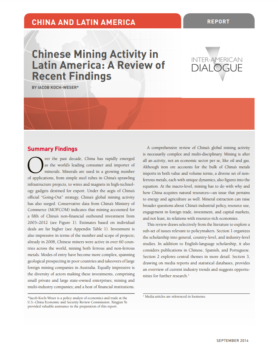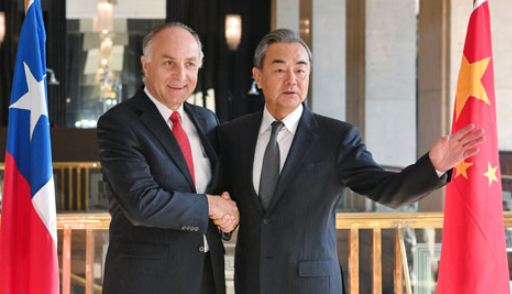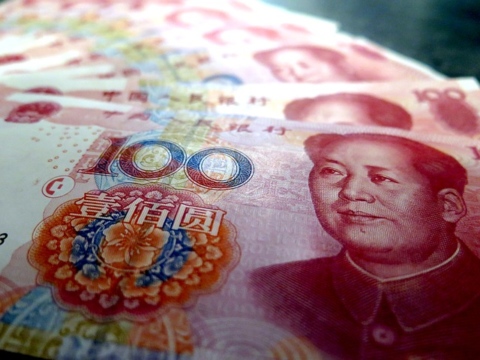
Chinese Mining Activity in Latin America
China has rapidly emerged as the world’s leading consumer and importer of minerals.
A Daily Publication of The Dialogue
The growth of China’s industrial output cooled in July to a 17-year low, the government’s National Bureau of Statistics said Aug. 13. The data followed downbeat factory surveys, weaker-than-expected bank lending and a rising jobless rate in Chinese cities, among other gloomy indicators. The weakening economic conditions come as China is engaged in a trade war with the United States. Last month, Ecuadorean President Lenín Moreno expressed hopes that the United States and China would resolve their dispute, saying that when big countries fight, smaller ones pay the price. How is China’s cooling economy and the trade war affecting Latin American countries? Which countries in the region have become most dependent on China’s growth? What can Latin American countries do to protect themselves in the context of economic weakening in China?
Lin Hua, associate researcher in the Institute of Latin American Studies at the Chinese Academy of Social Sciences (CASS): “First of all, although the growth of China’s industrial output in July declined, this kind of fluctuation is common between months. Secondly, we should be confident that China’s economy will maintain steady growth. In the first half of 2019, China’s economy grew by 6.3 percent year-on-year, in line with expectations. In the short run, trade wars are good for Latin American countries. Because of Sino-U.S. trade frictions, China actively opens up third-party markets, which can benefit Latin American exporters of commodities. However, in the long run, the unilateral protectionist measures taken by the United States in pursuit of its own economic interests will completely destroy the rules of international trade and the global market, which will seriously hamper the economic development of Latin American countries. The persistence of Sino-U.S. trade disputes will inevitably bring more uncertainty to Latin American economies and increase investment risks in Latin America, thus offsetting the short-term benefits that Latin America has gained from the trade war. After entering the 21st century, China’s rise and economic vitality have made it possible for Sino-Latin American economic and trade relations to develop rapidly, and Sino-Latin American cooperation has contributed to their respective trade diversification. At present, China’s economy has begun a structural transformation stage, which is both a challenge and an opportunity for Latin American countries. Regardless of whether there is a trade war or not, Latin American countries should consider how to take advantage of China’s economic transformation. As consumption will become the main driving force of China’s economy in the future, Latin American countries should seize the opportunity of the expanding middle class and increasing consumption capacity, expand exports of high-quality agricultural products and food to China, and improve travel convenience to attract more tourists.”
Margaret Myers, director, and Ricardo Barrios, associate, in the Asia and Latin America Program at the Inter-American Dialogue: “China’s economic challenges, which Beijing largely attributes to a structural deleveraging after years of debt-intensive growth, will only be exacerbated by a protracted U.S.-China trade war. As the IMF indicated in July, ongoing tensions are adding pressure to an economy already facing considerable obstacles. As China grapples with growing unemployment, for example, a number of large U.S. electronics producers have announced plans to move production out of China in a sign of continued U.S.-China decoupling. Even as China expands its overseas engagement through Xi Jinping’s signature Belt and Road Initiative, slowing growth in China will mean slower global growth, including for the ‘smaller’ countries that Moreno referenced. In fact, with few prospects for near-term resolution of the trade war, the IMF has revised down its predictions for global growth in both 2019 and 2020. Brazilian soy producers have nevertheless seen some gains as Chinese demand for soy shifts away from the United States. But overall exports of Brazilian soy were affected by an outbreak of African swine fever in China, and from and easing of U.S.-China tensions in early 2019 which led the United States to send some of its soybean stocks to China. China has also reportedly been more receptive to partnering with agricultural and other companies in the Southern Cone as it looks to build new partnerships and diversify sources of agro-industrial supply. Metals prices have slumped amid concerns about slowing global growth, however, with implications for major metals exporters in the region. Looking ahead, much will depend not only on the resolution of the trade war, but also on China’s interest in implementing a full-fledged economic stimulus.”
Lawrence Krohn, adjunct professor of international economics at The Fletcher School of Tufts University: “President Moreno is correct, and to his smaller countries can be added some larger ones. But the U.S./global recession threat constitutes a greater risk to Latin America than China’s slowdown, which, after all, long predates the recent trade wars. Mexico and commodity-scarce Central America and the Dominican Republic are largely insulated from direct effects of China’s slowdown, although they’re not immune to the cumulative global impact of the trade war between China and a benighted U.S. president. Directly affected by China’s distress, however, are the commodity-oriented nations of South America, the largest of which, Brazil and Argentina, are already vulnerable for domestic reasons. South America is exposed mainly on the commodity export front (mostly minerals and soybeans go to China). Still, of all Latin American exports, only about 19 percent go to Asia. Notwithstanding the ambition of its Belt and Road Initiative, China is not yet a major direct—or portfolio—investor in the region. Argentina is already in crisis, so increased Chinese reticence to buy there may hardly be detectable. Brazil’s economy has been weak since 2014-15 with little relief in sight, despite renewed easing by its central bank. Admittedly, an unlikely sharp deterioration in Chinese import growth could send Brazil into recession. South American nations would have few policy options to counter a true collapse in Chinese demand. Fiscal stimulus is excluded for many, due to already burdensome debt/GDP ratios. Happily, many nations that once pegged currencies to the U.S. dollar have untethered their rates, enabling them to implement easier monetary policy in a bid to weaken their currencies, eroding real wages, thereby enhancing tradables’ competitiveness to compensate for losses of Chinese demand. But if most Latin American central banks are cutting policy rates and the U.S. Fed is also easing, the desired competitive boost will not materialize; a fortiori if China retaliates, as seems likely, by again promoting renminbi depreciation.”
Carlos Parodi, chairman of the economics department at Universidad del Pacífico in Lima: “Most countries in this region face huge infrastructure gaps, and they badly need more investment in ports and airports, transportation systems, energy production and connectivity of all sorts. With the withdrawal of Odebrecht and other major Brazilian firms as a result of the Lava Jato investigations, foreign investment in these sectors has slowed. Indeed, in Peru, it has virtually halted this year. Our governments have expectations that Chinese firms and banks will pick up the slack and invest in these areas, as part of the extension of the Belt and Road Initiative to Latin America. Yet it is not clear that Chinese enthusiasm for investing in such initiatives in this region will be sustained, as their own situation cools down. The fact that Latin America’s social and environmental standards for such investments have improved considerably also means more challenges and costs that Chinese investors may not be used to assuming, but our more democratic societies certainly expect them to do so.”
The Latin America Advisor features Q&A with leaders in politics, economics, and finance every business day. The publication is available to members of the Dialogue’s Corporate Program and others by subscription.
China has rapidly emerged as the world’s leading consumer and importer of minerals.
Despite slowing economic growth in China, the country’s banks remain a primary source of finance for certain Latin American nations.
What actions should governments in the region be taking in light of China’s changing role in the global economy?
 China has been strengthening ties in Latin America, including in a meeting between Chilean Foreign Minister Teodoro Ribera and his Chinese counterpart Wang Yi last month. But China’s economic growth is slowing. // Photo: Chinese Government.
China has been strengthening ties in Latin America, including in a meeting between Chilean Foreign Minister Teodoro Ribera and his Chinese counterpart Wang Yi last month. But China’s economic growth is slowing. // Photo: Chinese Government.
 Video
Video
